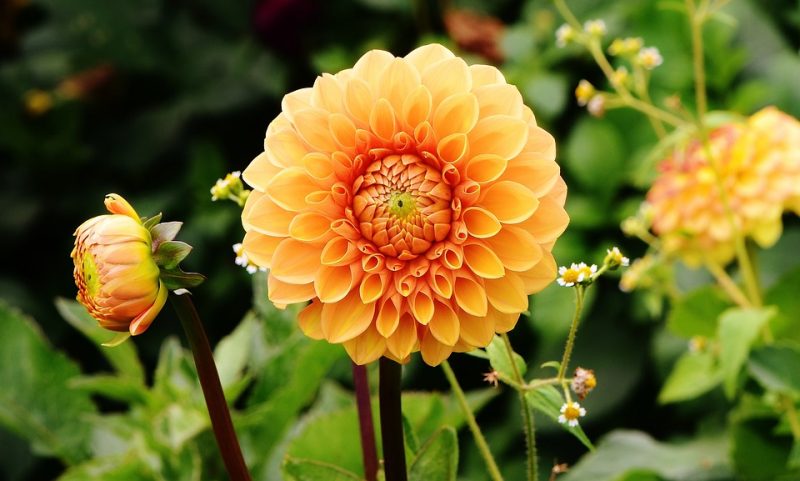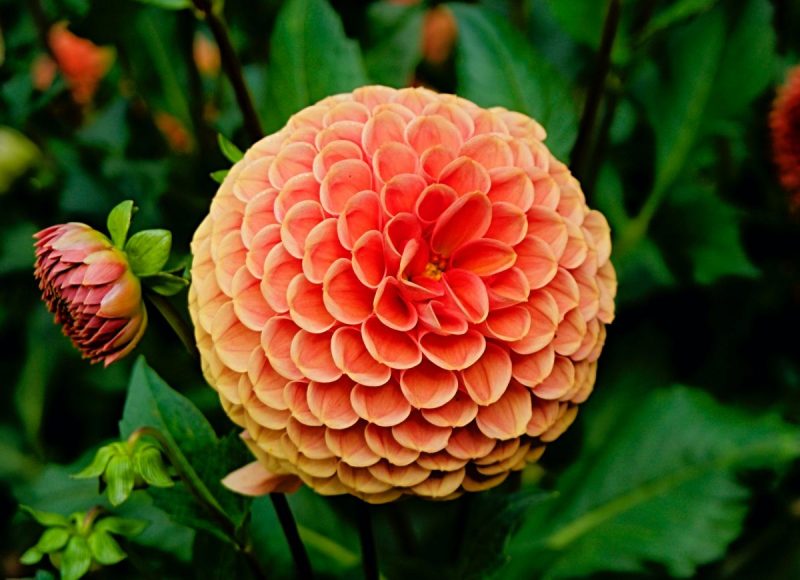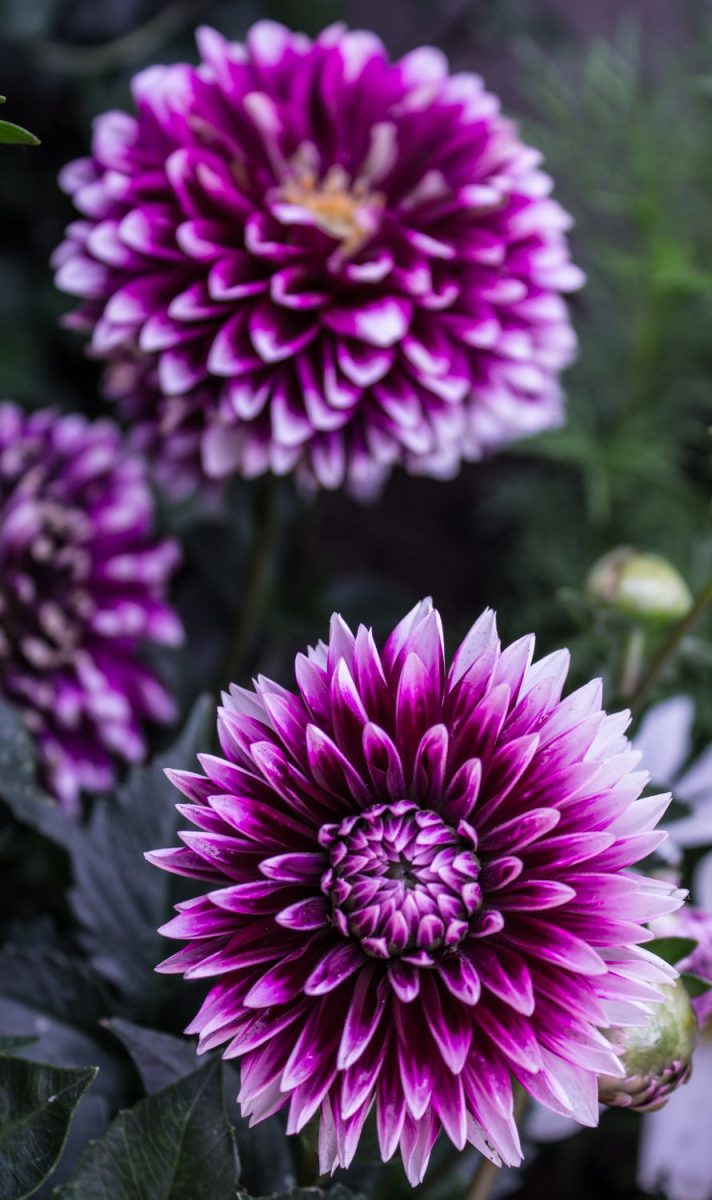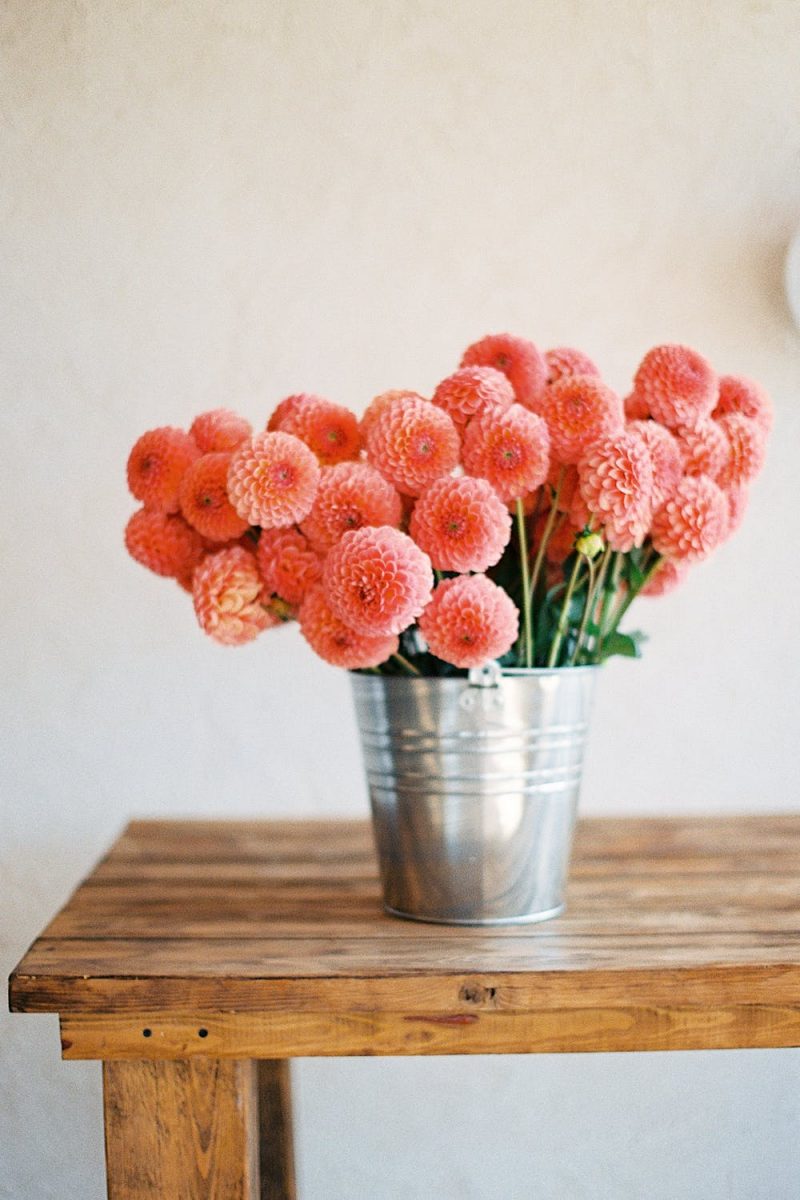Dahlia, planting guide and care work

Dahlia is part of the genus of the same name (Dahlia), being a herbaceous, perennial species, originating in Central America. The genus Dahlia comprises about 15 perennial species with tuberous roots and fistulous stems. Dahlias vary a lot in size, color, shape and type of flowers. The leaves are pinnately-lobed, intense green. The dahlia flowers are large, the colors are various, and they appear from June to the end of autumn. The most popular dahlia is the hybrid species Dahlia hybrida, which includes most of the varieties currently grown.
Types of dahlias
- daisy – with ligulate flowers, arranged in a single row; the tubular flowers are small and the size varies between 30-50 cm;
- colerette – the tubular flowers are small, yellow, and the ligulate ones are arranged on the edge of the calathidium;
- pompon – globular inflorescences; the size of the plant is large.



Environmental conditions
Light
Dahlias prefer sunlight and grow very well in direct sunlight.
Temperature
They are sensitive to low temperatures, so it is recommended that planting be done after the average daily temperatures are positive.
Soil
These species like sandy-clayey medium soils, fertile and with high drainage capacity. They also prefer slightly acidic soils, with a pH of 6.5 to neutral.
Care
Watering
It is recommended to be done after the plants have sprouted. Watering should be done moderately and if the temperatures are high, the frequency of watering will increase.
Fertilization
Dahlias react favorably to the application of fertilizers. A balanced fertilization sustains the healthy development of the plants.
Recommended products
-
You can find products on a different store
Change Store -
You can find products on a different store
Change Store -
You can find products on a different store
Change Store -
You can find products on a different store
Change Store -
You can find products on a different store
Change Store -
You can find products on a different store
Change Store -
You can find products on a different store
Change Store -
You can find products on a different store
Change Store -
You can find products on a different store
Change Store -
You can find products on a different store
Change Store -
You can find products on a different store
Change Store -
You can find products on a different store
Change Store -
You can find products on a different store
Change Store -
You can find products on a different store
Change Store -
You can find products on a different store
Change Store -
You can find products on a different store
Change Store -
You can find products on a different store
Change Store -
You can find products on a different store
Change Store -
You can find products on a different store
Change Store -
You can find products on a different store
Change Store -
You can find products on a different store
Change Store -
You can find products on a different store
Change Store -
You can find products on a different store
Change Store -
You can find products on a different store
Change Store
Propagation
Propagation is done by seeds or tubers, which are planted in the spring when temperatures exceed 10-15 °C.
Diseases and pests
The most common diseases of dahlias are powdery mildew, gray mold and dahlia mosaic virus. Among the pests, red spider mites, aphids, thrips and snails are common.
Recommended products
-
You can find products on a different store
Change Store -
You can find products on a different store
Change Store -
You can find products on a different store
Change Store -
You can find products on a different store
Change Store -
You can find products on a different store
Change Store -
You can find products on a different store
Change Store -
You can find products on a different store
Change Store -
You can find products on a different store
Change Store -
You can find products on a different store
Change Store -
You can find products on a different store
Change Store -
You can find products on a different store
Change Store -
You can find products on a different store
Change Store -
You can find products on a different store
Change Store -
You can find products on a different store
Change Store -
You can find products on a different store
Change Store -
You can find products on a different store
Change Store -
You can find products on a different store
Change Store -
You can find products on a different store
Change Store -
You can find products on a different store
Change Store -
You can find products on a different store
Change Store -
You can find products on a different store
Change Store -
You can find products on a different store
Change Store -
You can find products on a different store
Change Store -
You can find products on a different store
Change Store
Recommended products
-
You can find products on a different store
Change Store -
You can find products on a different store
Change Store -
You can find products on a different store
Change Store -
You can find products on a different store
Change Store -
You can find products on a different store
Change Store -
You can find products on a different store
Change Store -
You can find products on a different store
Change Store -
You can find products on a different store
Change Store -
You can find products on a different store
Change Store -
You can find products on a different store
Change Store -
You can find products on a different store
Change Store -
You can find products on a different store
Change Store -
You can find products on a different store
Change Store -
You can find products on a different store
Change Store -
You can find products on a different store
Change Store -
You can find products on a different store
Change Store -
You can find products on a different store
Change Store -
You can find products on a different store
Change Store -
You can find products on a different store
Change Store -
You can find products on a different store
Change Store -
You can find products on a different store
Change Store -
You can find products on a different store
Change Store -
You can find products on a different store
Change Store -
You can find products on a different store
Change Store
Additionally
- The organs of the plant are toxic to pets;
- It is recommended that after the first frost, the tubers be removed from the ground and stored at temperatures of 3-8 °C; also, the atmospheric humidity needs to be moderate.















































































































































































































































































































































































































































